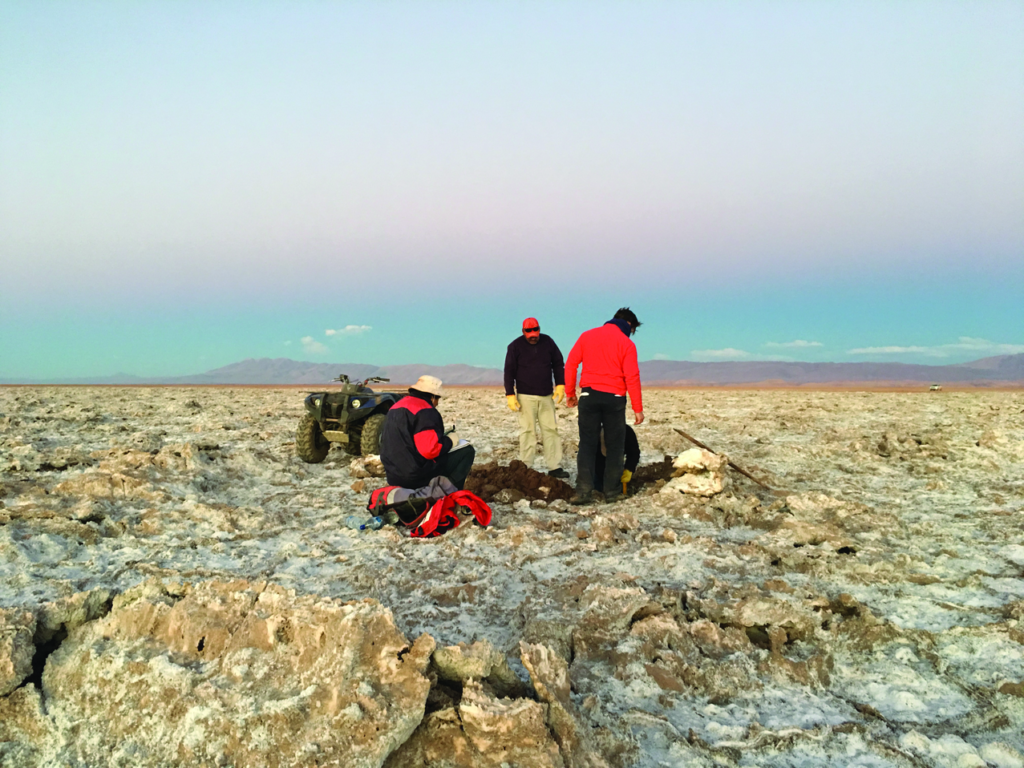JV Article: Argentina Lithium & Energy aims to make new lithium brine discovery at Rincon West in Argentina


Canadian explorer Argentina Lithium and Energy (TSXV: LIT; US-OTC: PNXLF) aims to advance new sources of high-quality lithium in Argentina to meet the growing demand for clean energy technologies powered by lithium-ion batteries.
Argentina Lithium is part of the Grosso Group of companies, which has been a pioneer of mineral exploration in Argentina for nearly three decades.
The Vancouver-headquartered junior holds a portfolio of lithium brine projects covering approximately 700 sq. km in Argentina’s Salta and Catamarca provinces. These include Rincon West, Pocitos, Antofalla North, and Incahuasi.
The projects sit within the lithium triangle – an arid region of the Andes mountains encompassing parts of Argentina, Bolivia, and Chile – that produces around half of the global lithium supplies and hosts about 60% of known resources.

Lithium “is the backbone of the world’s electrification, but demand for the mineral is rapidly outpacing supply. So new sources need to be discovered and developed to meet this global energy transition demand,” says Nikolas Cacos, Argentina Lithium’s vice-president of exploration.
“Unlike Chile, which has a well-developed lithium industry, underinvestment over the past few decades in Argentina’s lithium sector has presented a tremendous opportunity to discover new sources of lithium in an area that is highly prospective but has been largely underexplored,” he says.
Cacos notes that Chile currently accounts for roughly a quarter of global lithium production, whereas Argentina, although a top-five lithium producer, accounts for about only 10% of global supply.
According to a World Bank report, “Minerals for Climate Action: The Mineral intensity of the Clean Energy Transition,” around five times more lithium than is mined currently will be needed by 2050 to meet the expected demand for clean energy technologies.
Argentina Lithium recently expanded its footprint in Argentina, acquiring Rincon West under an exploration and purchase option agreement.
Under the agreement, the company can earn a 100% interest in Rincon West, which covers approximately 23.7 km2 of claims in a single mining concession located on the west side of the Salar del Rincon in in the Salta province, approximately 150 km west of the town of San Antonio de Los Cobres.
The property lies approximately 3,760 metres above sea level and shares similar characteristics to other salars (salt flat) in the region, says Cacos. “It’s had very little exploration work and represents an exciting new opportunity to discover lithium at a salar known to host lithium-bearing brines.”
Cacos says the property is situated close to two significant lithium resource development projects operated by Rio Tinto (NYSE: RIO; LSE: RIO: ASX: RIO) and Argosy Minerals (ASX: AGY), both of which have achieved demonstration-scale production of lithium carbonate.
Rincon West also benefits significantly from being in a mining-friendly jurisdiction, with both the provincial and federal governments “very supportive of mining, particularly lithium mining,” he notes.
“It also benefits from existing infrastructure, with a railroad running right by the property. It can be accessed year-round via an existing road network, reducing the cost of exploration, and is just 17 km south of Provincial Route 51, which connects the region to Chile’s coastal ports. The InterAndes power corridor also runs within 1.0 km to the north,” Cacos says.
Previous exploration included a geophysical survey that identified a conductive unit around 100 metres below the central part of the property, which he says indicated that the basin was potentially very prospective for high value lithium brines.
“In light of this previous work, we decided to collect additional sub-surface resistivity data that would provide vital information to support drill testing on the project to validate the targets and assess the grade and estimate of the brine content of the host formations.”
In May, Argentina Lithium completed a 36.4-line-km deep-seeing transient electromagnetic soundings (TEM) survey to image the sub-surface. TEM soundings are an advanced reconnaissance technique frequently employed when exploring lithium salars.
A total of 190 soundings were completed at 200-metre intervals along six east-west lines and two transecting lines, with a north-south line spacing of between 1,400 and 1,900 metres. The maximum depth of the soundings varied from 200 metres to up to 1,700 metres below surface.
The results from the survey “suggested there were enormous areas distributed underneath and throughout that property that appear to host brine aquifers that may contain significant amounts of lithium, and allowed us to identify target areas for drill testing,” Cacos explains.
Later that month, Argentina Lithium commenced a five-hole drill program to test the potential aquifer quality and depth down to approximately 400 metres.
“We’re permitted to nine holes and the drill results will determine whether we follow up with additional drilling,” he says.
The drilling, he adds, is expected to be completed by the fall, with the results intended to support an initial resource estimate for Rincon West “expected towards the end of the first quarter next year.”
Cacos says the company is in a “good cash position,” with around $4 million in the treasury, and “so we are well-positioned to fund the proposed work program.”
Argentina Lithium also plans to conduct a 35-line-km TEM survey of Antofalla North, located less than 20 km west of Argentina’s largest lithium producing operation at the Salar de Hombre, and an approximate three-hole follow-up drill program on the property; a 50-line-km TEM survey of Pocitos; and a 50-line-km TEM survey of Incahuasi.
The preceding Joint Venture Article is PROMOTED CONTENT sponsored by ARGENTINA LITHIUM & ENERGY and produced in co-operation with The Northern Miner. Visit www.argentinalithium.com for more information.
Comments